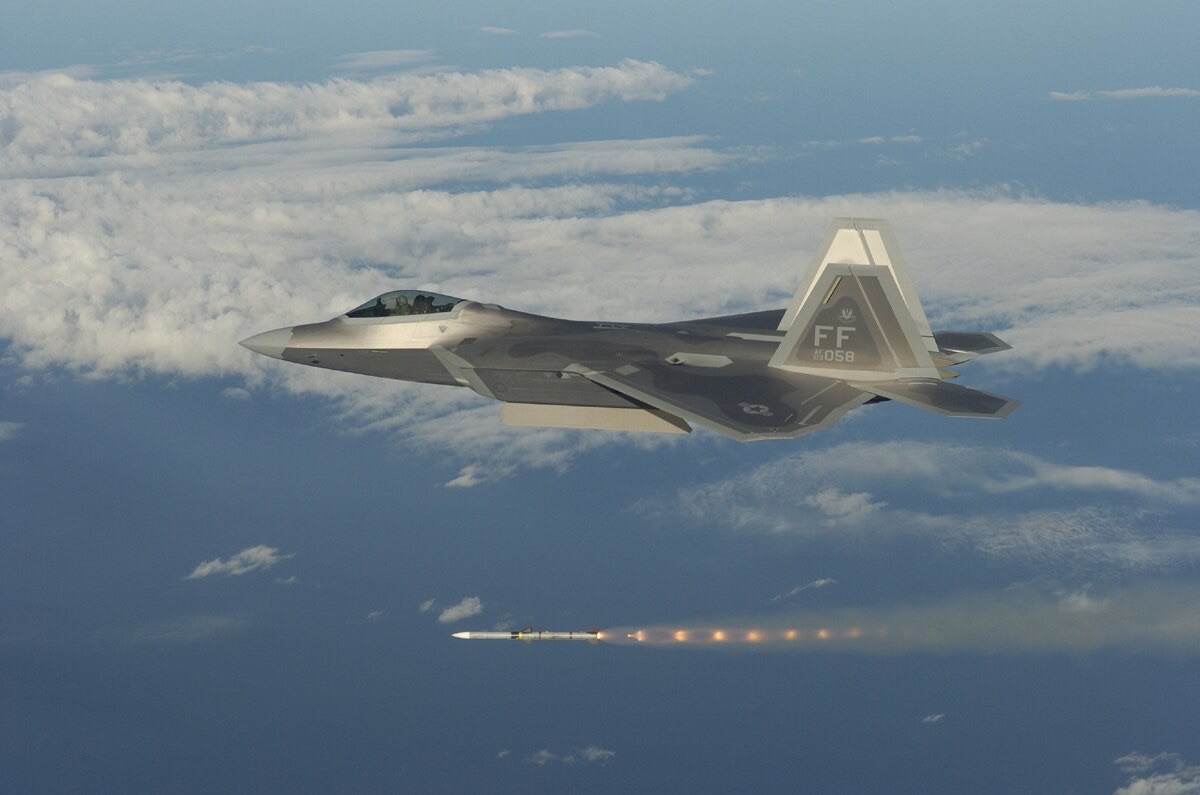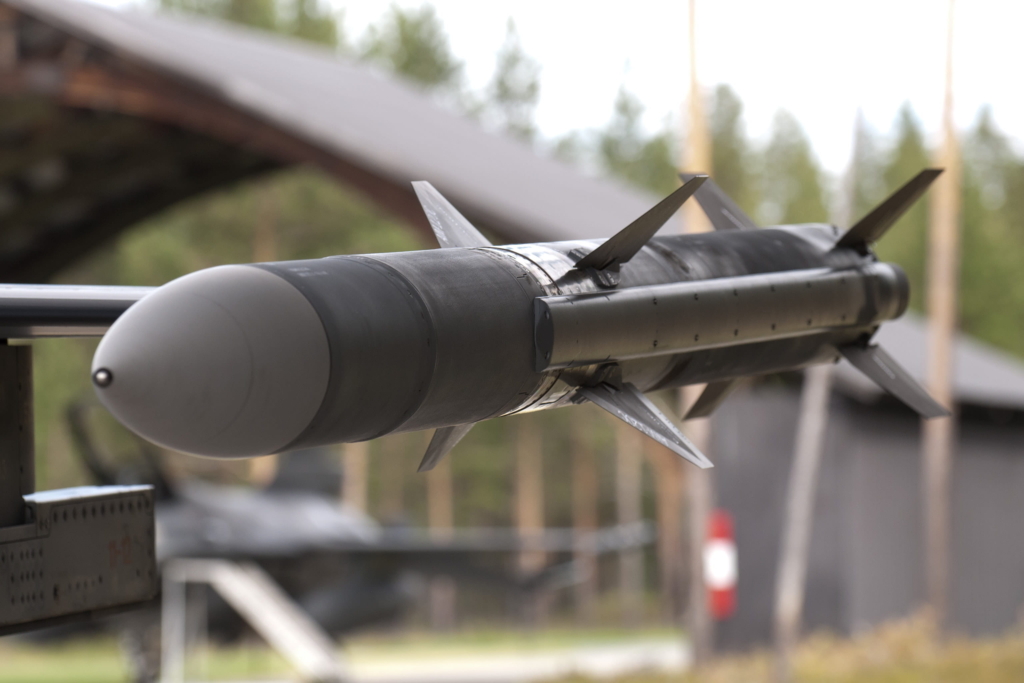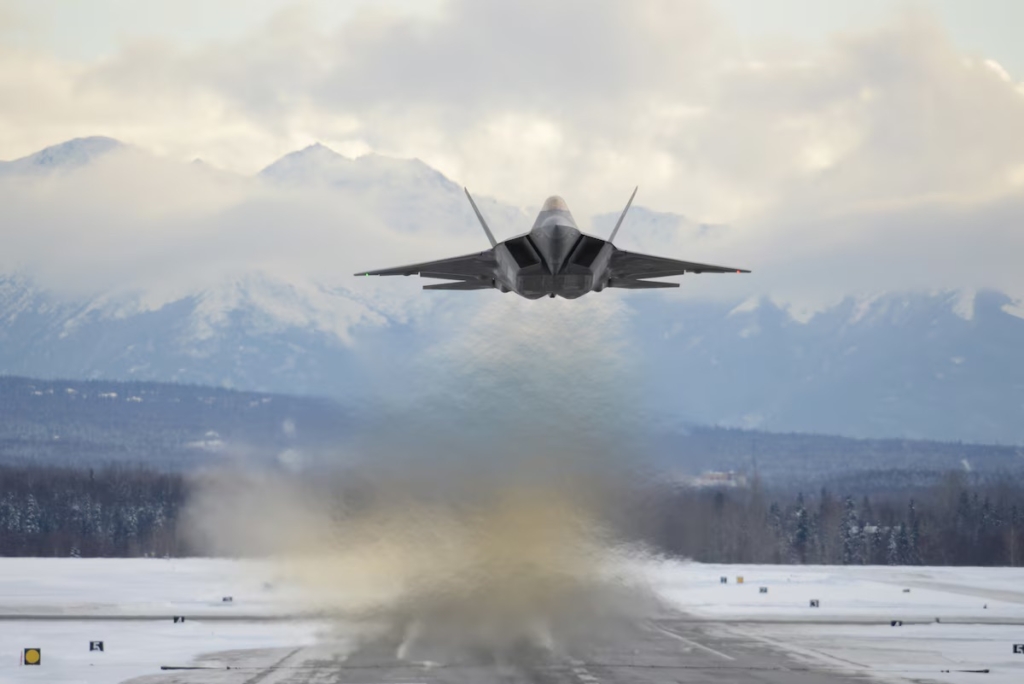Lockheed Martin F-22 Raptor fires record-breaking AMRAAM shot

September 18, 2025

The Lockheed Martin F-22 Raptor has set a new benchmark in aerial warfare after successfully executing the longest known AIM-120 AMRAAM missile shot by a 5th-generation fighter.
Conducted at Eglin Air Force Base in Florida during late 2024, the test demonstrated not only the extended reach of the missile but also reaffirmed the Raptor’s position as the world’s most formidable air superiority aircraft.
The milestone, achieved in partnership between Raytheon and the US Air Force’s Air Combat Command, highlights the paradox of modern airpower: even as older fleets retire, America’s first stealth fighter continues to grow deadlier.
F-22 Raptor milestone proves AMRAAM’s extended range
The record-setting event saw an F-22 Raptor fire an AIM-120 AMRAAM to its longest known time of flight.
According to Raytheon, the test validated years of upgrades under the US Air Force’s Form, Fit, Function Refresh (F3R) program, which has enhanced the missile’s software, electronics and seeker performance.

Sam Deneke, president of Air & Space Defense Systems at Raytheon, described the achievement as a preview of tomorrow’s battlespace.
“Achieving air superiority in the future, highly contested battlespace depends on the precision and lethality of air-to-air missiles. AMRAAM is already known as the gold standard, and these tests prove it will continue to play a critical role for the US and its allies for decades to come.”
Why the F-22 Raptor still dominates the skies
Although the AMRAAM was the focus of the test, the aircraft that launched it remains central to the story.
Designed during the Cold War to outmatch Soviet fighters, the F-22 Raptor combines stealth, supercruise, advanced avionics and unmatched manoeuvrability. Its ability to detect, track and engage targets before being seen is still unrivalled.

Armed with six AMRAAMs and two AIM-9 Sidewinders in its primary role, the Raptor offers “first kill” potential in almost any scenario. Its stealth profile and powerful engines capable of sustained supersonic flight without afterburners give it reach and agility no rival has equalled.
The US Air Force continues to invest billions into upgrades ranging from new radars and electronic warfare systems to advanced weapons integration, ensuring the F-22 stays dominant into the 2030s.
AMRAAM upgrades keep the missile lethal and relevant
The AIM-120 AMRAAM is hardly new; entering service in the early 1990s, it has logged more than 30 years of combat experience, over 6,000 successful live fires, and a reputation as the most reliable beyond-visual-range missile ever built.
Integrated on 14 platforms in 43 countries, including the F-15, F-16, F/A-18, Eurofighter Typhoon, Gripen and Tornado, it also forms the backbone of the NASAMS ground-based air defence system.

Yet the latest tests confirm the AMRAAM still has untapped potential. Successive upgrades to its seeker, processors and flight controls are steadily extending its range and lethality against sophisticated threats.
The version fired from the F-22 at Eglin embodied these enhancements, proving that legacy systems can evolve to meet modern challenges.
Extending lethality for 5th-generation fighters
The successful long-range AMRAAM shot also carries a strategic message: the US is ensuring that its 5th-generation fleet – notably the F-22 and F-35 – remains unmatched not just in stealth and sensors, but in weapons reach.
While stealth allows these aircraft to approach unseen, pairing them with missiles capable of greater flight times dramatically expands their engagement envelope. In practice, that means an F-22 or F-35 could neutralise an enemy fighter before it comes close to launching its own weapons.
For NATO allies, the test reassures that AMRAAM stockpiles remain highly relevant even as next-generation missile programs remain years away.
The F-22 Raptor’s enduring role in US air dominance
Critics often argue the F-22 programme ended too soon; production ceased in 2012 after only 187 aircraft were built. Yet this test underlines why the Raptor remains the backbone of American air superiority.

It continues to operate as part of the Air Force’s Global Strike Task Force, projecting power and denying access to adversaries worldwide. Its blend of stealth, agility and sensor fusion, now matched with even more lethal AMRAAMs, secures America’s dominance in the skies well into the next decade.
The record-breaking AMRAAM shot from the F-22 Raptor is more than a test statistic. It is a demonstration of how proven platforms and weapons can be modernised to outpace future threats.
For Raytheon, it reaffirms the AMRAAM’s role as a pillar of global air combat. For the US Air Force, it justifies continued investment in keeping the Raptor relevant until a sixth-generation fighter enters service.
And for adversaries, the message is clear: America’s king of the skies still reigns supreme, striking further and faster than ever before.
















